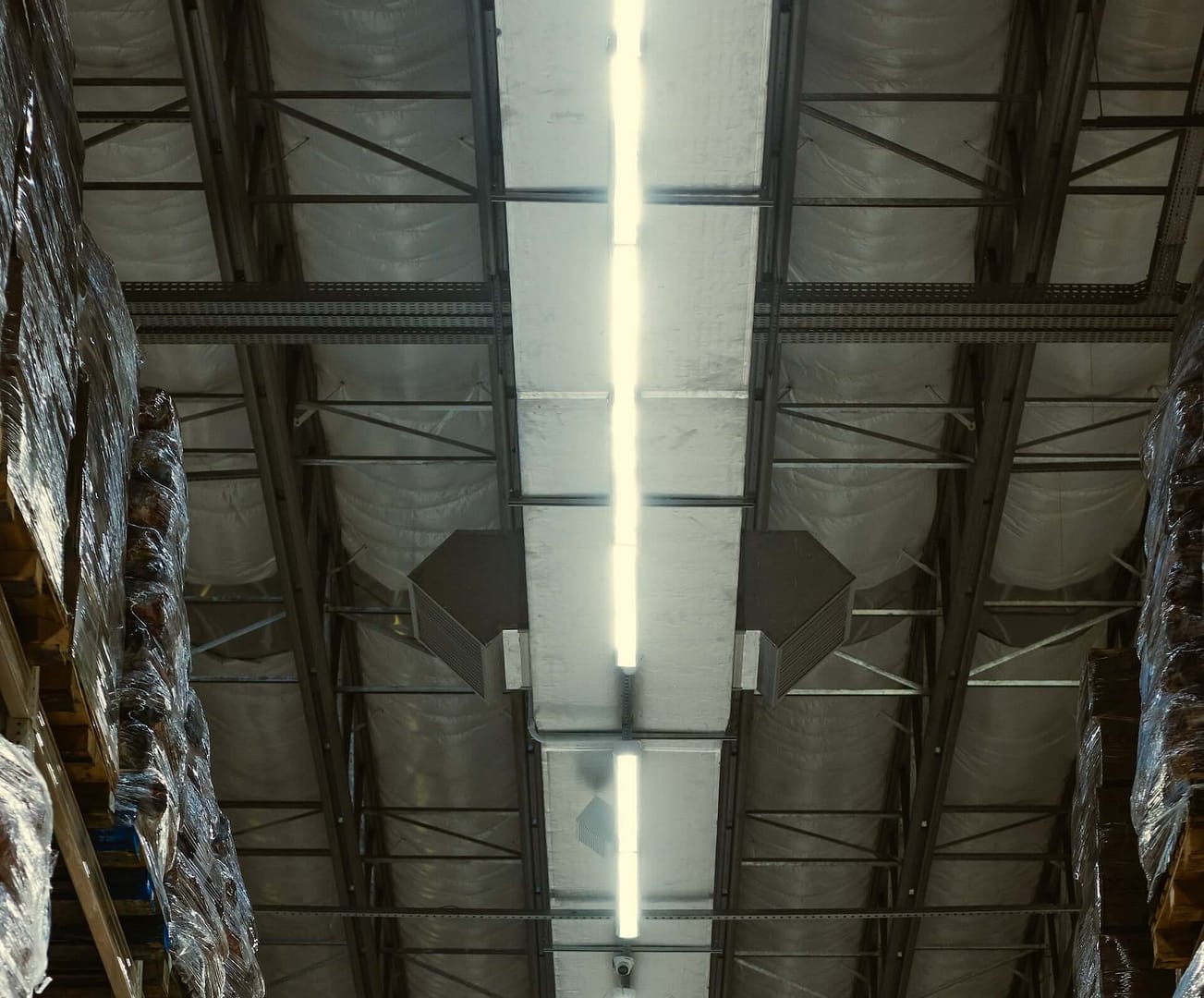In the hustle and bustle of our daily work lives, one often overlooked aspect is the quality of lighting in our workplaces. “The Impact of Poor Lighting on Workplace Accidents” is a topic that goes beyond just the flick of a switch—it delves into the very heart of employee safety and well-being. Let’s unravel this issue, exploring how inadequate lighting can contribute to accidents and the associated risks in a workplace setting.
Shedding Light on the Problem
Workplaces are dynamic environments where various tasks demand our attention. Imagine navigating through a maze of desks, machinery, and tools with insufficient lighting—it’s like manoeuvring through the unknown. Poor lighting significantly hampers visibility, creating an environment ripe for accidents. Unevenly lit spaces can conceal hazards, leading to slips, trips, and falls, which account for a substantial portion of workplace accidents.
Consider a scenario where a factory floor is poorly lit, with dim bulbs casting shadows over equipment and walkways. In such conditions, employees may struggle to identify potential dangers, increasing the likelihood of collisions or accidents involving machinery. This is not merely a theoretical concern; it’s a tangible risk that affects workers daily.
How Does Poor Lighting Cause Accidents?
The connection between poor lighting and accidents may not be immediately apparent, but it becomes clearer when we examine the impact on human factors. Humans are visual creatures, relying heavily on sight to process information and navigate our surroundings. When light is insufficient or unevenly distributed, our ability to perceive depth, judge distances, and identify obstacles diminishes.
Think about a construction site where inadequate lighting shrouds the workspace. Workers may struggle to gauge the height of structures, leading to missteps and falls. Similarly, in an office setting, a poorly lit stairwell can become a breeding ground for accidents, as employees may misjudge the height of steps or fail to notice potential tripping hazards.
The Domino Effect of Poor Lighting
The consequences of poor lighting extend beyond immediate accidents. Productivity takes a hit as employees may move cautiously or take longer to complete tasks due to reduced visibility. Strained eyesight resulting from prolonged exposure to inadequate lighting can also lead to fatigue and discomfort, further jeopardising overall well-being.
In essence, poor lighting sets off a domino effect, impacting not only safety but the efficiency and morale of the workforce. This issue, if left unaddressed, can become a pervasive problem that affects the core functioning of a workplace.
Risks of Poor Lighting in the Workplace
Let’s delve deeper into the specific risks associated with poor lighting in the workplace, emphasising the various ways it can compromise employee safety and contribute to accidents.
Increased Strain and Fatigue
Inadequate lighting forces our eyes to work harder, leading to eye strain and fatigue. Prolonged exposure to poor lighting conditions can contribute to headaches, blurred vision, and overall discomfort. Imagine reading small print on documents or working on a computer with insufficient light—these activities become not only challenging but also detrimental to eye health.
Reduced Visibility of Hazards
Workplaces are rife with potential hazards, from sharp tools to wet floors. Poor lighting obscures these dangers, making it difficult for employees to identify and navigate around them. A cluttered storage room, for example, becomes a minefield of hidden risks when dimly lit, increasing the chances of employees tripping over objects or colliding with obstacles.
Impaired Reaction Time
Accidents often happen in the blink of an eye, requiring quick reactions to avoid or minimise harm. Poor lighting slows down our ability to react effectively. Whether it’s a machine malfunctioning or a spill on the floor, the delay caused by reduced visibility can turn a manageable situation into a full-blown accident.
Increased Risk of Falls
Slips, trips, and falls are among the most common workplace accidents, and poor lighting exacerbates this risk. Uneven surfaces, changes in elevation, or even simple obstacles can become treacherous in low-light conditions. A poorly lit staircase or a dim hallway can turn routine movements into potential hazards.
Impact on Mental Well-being
Beyond the physical risks, poor lighting also affects the mental well-being of employees. A gloomy and dim environment can contribute to feelings of stress, anxiety, and a general lack of motivation. A well-lit workspace, on the other hand, promotes a positive atmosphere, boosting mood and overall job satisfaction.

Making an Accident at Work Claim with National Claims
As the importance of workplace safety comes to the forefront, individuals who have suffered due to poor lighting conditions may consider making an accident at work claim. National Claims, a leading advocate for workplace safety, stands ready to assist those seeking compensation for injuries resulting from inadequate lighting.
How National Claims Can Help
National Claims understands the nuances of workplace accidents and the impact poor lighting can have on individuals. With a team of experienced professionals, they navigate the legal landscape to ensure that clients receive the compensation they deserve. From gathering evidence to negotiating with employers and insurers, National Claims takes a comprehensive approach to support those affected by workplace accidents.
Initiating the Claims Process
Making an accident at work claim with National Claims is a straightforward claims process. Individuals can reach out to their dedicated team, providing details about the incident, including the circumstances, injuries sustained, and the impact on their daily lives. National Claims then evaluates the case, offering guidance on the viability of a claim and the potential compensation that may be pursued.
Advocating for Your Rights
National Claims goes beyond merely handling paperwork—they advocate for the rights of those who have suffered due to poor lighting in the workplace. Their commitment to justice ensures that clients receive not only financial compensation but also the recognition and support they need to move forward.
Conclusion
In the grand tapestry of workplace safety, the role of lighting often goes unnoticed. Yet, as we’ve explored, it plays a pivotal role in preventing accidents and fostering a conducive work environment. The impact of poor lighting on workplace accidents is not a mere abstraction—it’s a tangible risk that can compromise the well-being of employees and the overall productivity of a business.
As we move forward, let’s prioritise the importance of adequate lighting in our workplaces. By doing so, we not only enhance safety but also create spaces that nurture the health and happiness of those who contribute tirelessly to the success of our organisations. And for those who have suffered due to poor lighting, National Claims stands as a beacon of support, ready to guide individuals through the process of making an accident at work claim and seeking the justice they deserve.
Start your claim today by getting in contact with one of our helpful claims specialists.
Click below to see why we are one of the most trusted claims management companies in the UK.

We’re proud of our excellent customer reviews
We thrive on delivering exceptional service and ensuring our clients’ satisfaction. Don’t just take our word for it. Check out some of our independent reviews to see what our clients have to say.
Excellent

This firm is excellent, they sorted out my car pay out and injury claim very fast, they always communicate with you all the time.

My accident case was dealt with confidence and with great result of the outcome, especially James kept me informed all the time.

I was very impressed at the way my inquiry was treated. I was listened to attentively and everything I needed to know was explained to me.






